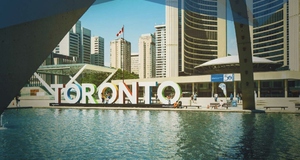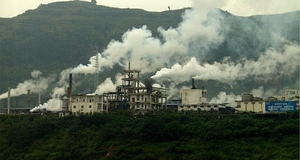Featured Article:Water Pollution Control Policy: Addressing Non-Point Source Pollution
By
2014, Vol. 6 No. 03 | pg. 3/3 | « 5. Summary and ConclusionTo summarize, maintaining a safe standard of water quality is of utmost importance to everyone concerned. Water quality is becoming a large issue in certain parts of Canada as indicated by the Walkerton tragedy, and new policy initiatives are needed both federally and provincially to address these problems. Historically, point sources have been controlled much more vigorously than non-point sources. Fortunately, Canadian provinces are responding to the increased awareness of the environmental damages from non-point sources and public pressure to ensure safety of drinking water. However, problems still persist among many other parts of Canada regarding water-quality standards, which is why the implementation of tradable permits as a policy instrument in the context of NPS pollutants is proposed. The lessons drawn here are based on the selected examples from the international arena and they should be considered within the institutional and existing regulatory settings of the countries in question, i.e. US and Australia. Both countries had a functioning regulatory regime for water pollution control prior to the introduction of trading schemes. It should be kept in mind that the (institutional and regulatory) context may be different in other countries or regions where trading schemes are being considered. Therefore, one should pay attention not only to the experience with the trading schemes but also to the pre-conditions, which may have facilitated or impeded trading (Kraemer et al. 2004). Since Canada’s institutional and existing regulatory settings are quite similar to that of US and Australia, I think that the implementation of tradable permits (as a policy instrument in the context of NPS pollutants) is the right step. Furthermore, the trading program already in existence in South Nation Watershed, Ontario is a shining example for the other remaining Canadian provinces to follow suit. However, functioning schemes of water pollution trading tend to be intertwined with traditional environmental management systems and strong (pre-existing) regulatory regimes. The latter ensures both the effectiveness and the integrity of trading schemes, by providing potential regulatory intervention (Kraemer et al. 2004). In this context, it may be argued that a usual and potentially advisable sequence of instrument use for pollution control is first CAC approaches, followed by EI instruments which are easier to introduce and implement than tradable permits (such as charges), finally leading to the possibility of trading pollution permits. Since Canadian provinces are not symmetric, it is quite difficult to establish whether a “one-size-fits-all” approach of tradable permits is the ultimate solution to the water pollution problem of the entire nation. ReferencesADB-Asian Development Bank (2011). Market-Based Instruments for Water Pollution in the People’s Republic of China. ISBN 978-92-9092-237-7.Apogee Research Inc., (1992). Incentive analysis for Clean Water Act Authorisation: Point source/non-point source trading for nutrient discharge reductions, Office for Water, Office of Policy, Planning and Evaluation, US EPA. Carlin, A. (1992). The US Experience with Economic Incentives to Control Environmental Pollution, EPA-230-R-92-001, Washington, D.C.: EPA. Economic Instruments for Water Management in Canada: Case Studies and Barriers to Implementation. Rep. Sustainable Prosperity, n.d. Web. 02 Apr. 2013. http://www.sustainableprosperity.ca/article1926. EPA-Environmental Protection Agency (1996a). Draft Framework for Watershed-Based Trading, EPA, Office of Water. EPA-Environmental Protection Agency (1996b). Watershed Protection-Trading, Available online: www.epa.gov/owow/watershed/trading.htm (7 June 2001). Faeth, P. (2000). Fertile Ground: Nutrient Trading’s Potential to Cost-effectively Improve Water Quality, Washington DC: World Resources Institute. Field, B.C. and N.D. Olewiler (2011). Environmental Economics. Whitby, ON: McGraw-Hill Ryerson. Print. Great Lakes Trading Network (2001). Great Lakes Trading Network: Projects and Programs, Available online: www.gltn.org/programs (18.6.01). James, D. (1997). Environmental Incentives — Australian Experience with Economic Instruments for Environmental Management, Canberra: Euroservices Pty Ltd. Kraemer, R.A. and K.M. Banholzer (1999). Tradable Permits in Water Resource Management and Water Pollution Control, OECD Proceedings, Implementing Domestic Tradable Permits for Environmental Protection, Paris: OECD. Kraemer, R.A., Interwies, E. and E. Kampa (2002). Tradable Permits in Water Resource Protection and Management, OECD Proceedings, Implementing Domestic Tradable Permits: Recent Developments and Future Challenges, Paris: OECD. Kraemer, R.A., Interwies, E. and E. Kampa (2004). The role of tradable permits in water pollution control, Working Paper, Institute of International European Environmental Policy, Berlin. NSW EPA-New South Wales Environmental Protection Agency (2001a). Hunter River Salinity Trading Scheme, Available online: www.epa.nsw.gov.au/licencing/huntersalinity.html (8.6.01). NSW EPA-New South Wales Environmental Protection Agency (2001b). Proposed Protection of the Environment Operations (Hunter River Salinity Trading Scheme) Regulation 2001, Sydney, March 2001. OECD (Organization for Economic Co-operation and Development) (2001). Domestic transferable permits for environmental management: Design and Implementation, Paris: OECD. O’Grady, D (2008). Point to non-point phosphorus trading in the South Nation River watershed. WIT Transactions on Ecology and the Environment Vol. 108: Environmental Economics and Investment Assessment II. Ribaudo, M.O., Horan, R.D. and M.E. Smith (1999). Economics of water quality protection from nonpoint sources: theory and practice. Resource Economics Division, Economic Research Service, U.S. Department of Agriculture. Agricultural Economic Report: 782. U.S. General Accounting Office. 1997. Air Pollution:Overview and Issues on Emissions Allowance Trading Programs. GAO/T-RCED-97-183. July. 1.) In the concept of “bubbles,” requirements of pollution abatement are applied to the sources of an industrial facility owned by the same firm, by taking all these sources as a whole (OECD, 2001). However, the “bubble can also encompass polluting sources belonging to several firms” (Kraemer et al. 2004). An imaginary bubble is placed over a set of sources and only the total quantity of pollutants emitted under the bubble is taken into consideration. Thus, polluters are free, within certain limits, to offset excess emissions from one source by a reduction made on another source, as long as overall quantity is not exceeded. 2.) Source: http://www.sustainableprosperity.ca/article1926. 3.) Source: http://www.sustainableprosperity.ca/article1926. Suggested Reading from Inquiries Journal
Inquiries Journal provides undergraduate and graduate students around the world a platform for the wide dissemination of academic work over a range of core disciplines. Representing the work of students from hundreds of institutions around the globe, Inquiries Journal's large database of academic articles is completely free. Learn more | Blog | Submit Latest in Economics |














